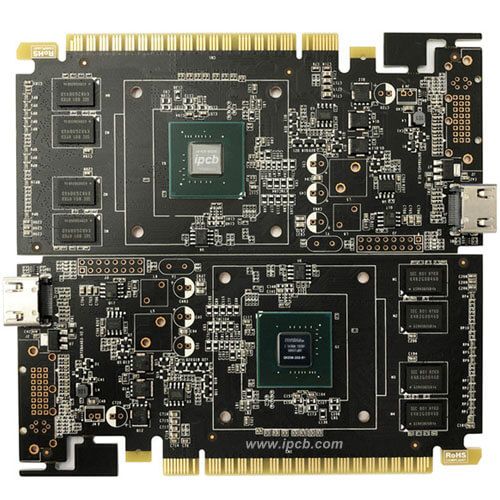After PCBA processing, we often see many residues on the surface of PCBA. These residues not only affect the appearance of PCBA, but also the quality of PCBA circuit board. Therefore, PCBA cleaning is very important. Next, we will introduce the method of manual cleaning of PCBA residues. Some small and medium-sized PCBA processing plants usually use the PCBA manual cleaning method, because the cost of manual cleaning is low and the cost efficiency is relatively high. Manual cleaning tools include cleaning tank, spray tank, brush, IPA or VIGON EFM, gloves, deionized water, wiping paper, air gun and sealing bag.

Manual cleaning steps:
1) Clean the circuit board in IPA or VIGON EFM, or spray IPA and EFM on the surface of the PCB board, using about 10ml every 4 square inches.
2) Use a wet soft short brush to wipe the PCB board continuously for about 10 seconds.
3) Rinse with deionized water, about 10 ml per 4 square inches. Effectively remove potential pollutant residues.
4) Wipe off excess deionized water with a clean lint free wiping cloth at the edge of the hand-held PCB board.
5) Visually inspect the cleanliness of the PCB board.
6) If necessary, use an air gun to dry the PCB board.
7) If the PCB board or components need to be stored for a period of time before coating, please put the PCB board or components into a sealed bag containing desiccant.
When the batch size of PCB board is relatively large, the disadvantages of manual cleaning method will appear. For example, the efficiency is relatively low and the cleaning is not comprehensive and meticulous. Many electronic components cannot be cleaned in place in the gap. There are many integrated circuit pins such as IC, which are close to the base plate, and the brush cannot enter the gap for cleaning. Therefore, PCBA manual cleaning is gradually replaced by automatic cleaning. What is automatic cleaning?
The automatic cleaning process is divided into three ways: water cleaning, semi water cleaning and solvent cleaning.
Tools and materials for automatic cleaning mainly include: water washer, deionized water system, conductivity tester, beaker, deionized water.
Automatic cleaning operation steps:
1) Preparation of deionized water: deionized water is prepared by electrodialysis device and ion exchange resin tank.
2) Conductivity test: use a conductivity tester to test the conductivity of water after electrodialysis and ion exchange resin tank. If both meet the indicator requirements, it can be used for water cleaning.
3) Lead in water washer: lead the deionized water in the water storage tank to the water washer.
4) Set the parameters of the washing machine: set the washing room and rinsing room to 60 ± 10 ℃; The drying chamber is set at 60 ℃~90 ℃.
5) Set chain speed: generally control the chain speed at 50~150cm/min.
6) After cleaning, PCBA is taken out of the cleaning machine and stored in the anti-static turnover container. The anti-static turnover container is required to be clean and dust-free to avoid the secondary pollution of PCBA after cleaning.
PCBA automatic cleaning is often used for the cleaning of large quantities of PCBA board. Some manufacturers with large production scale are more benefited. At the same time, with the development of science and technology, the automatic cleaning technology is becoming more and more advanced. Many small corners that cannot be reached by human can be automatically cleaned and dried. This may be the charm of scientific and technological development.